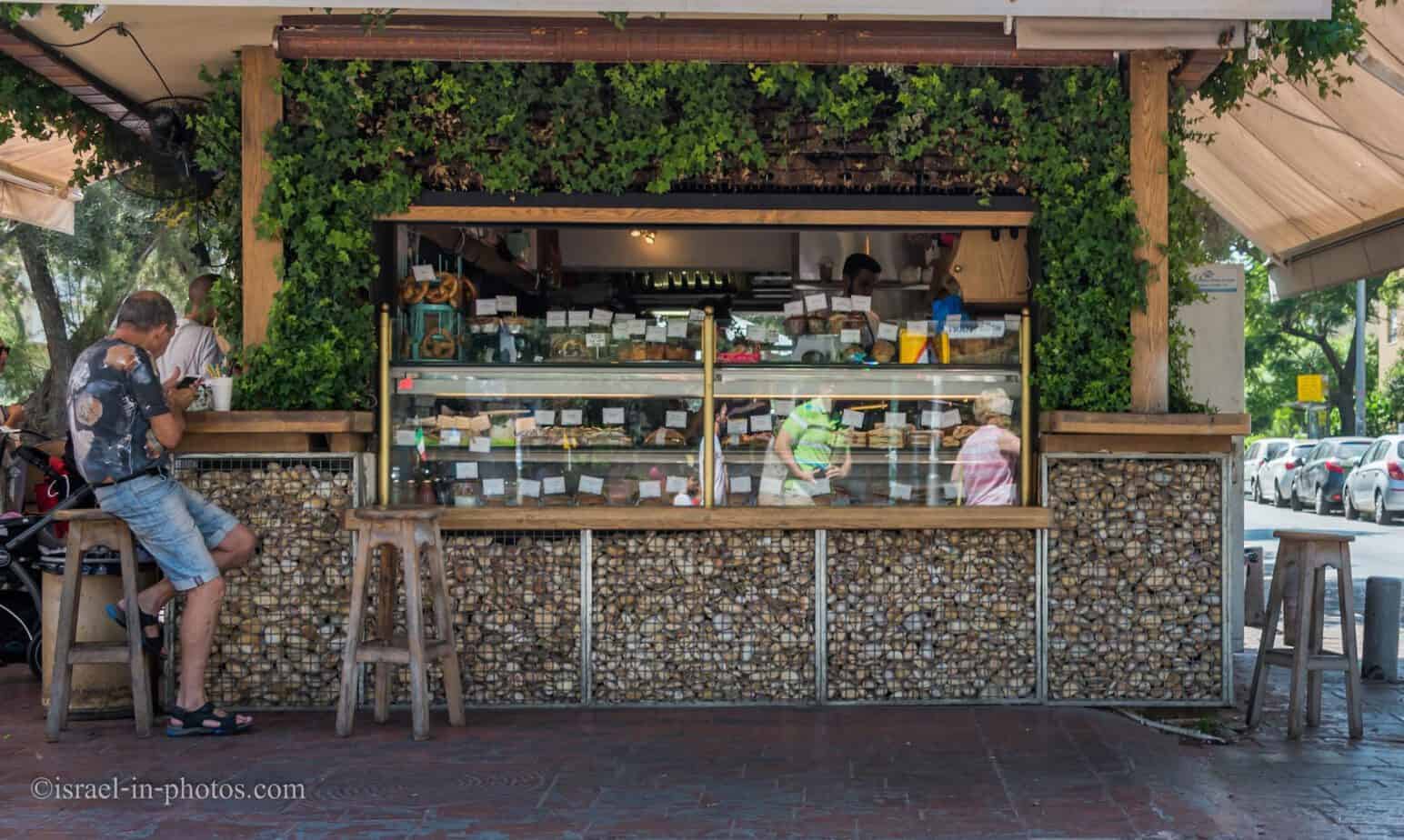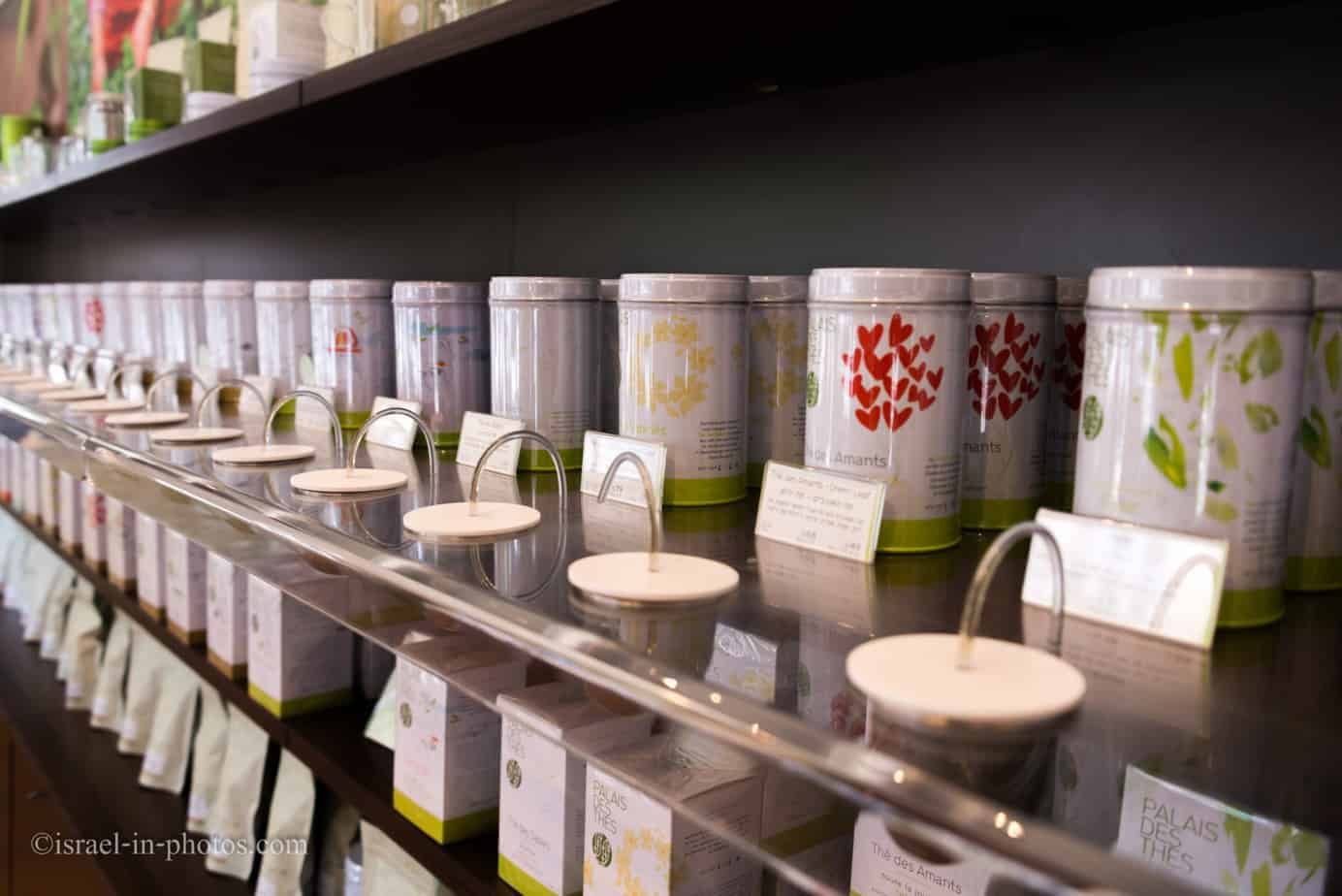Tel Aviv Walks #3 – Dizengoff Street
A big part of this walk was along the Dizengoff street. Who was Dizengoff? We will touch on this topic later.
Map of the area:
We have parked not far from Sarona and started walking toward Rabin Square.

In recent years, the number of electric bicycles in Israel increased drastically (for better and for worse). The infrastructure is still lacking, but the number of routes for cyclists is continuously increasing.
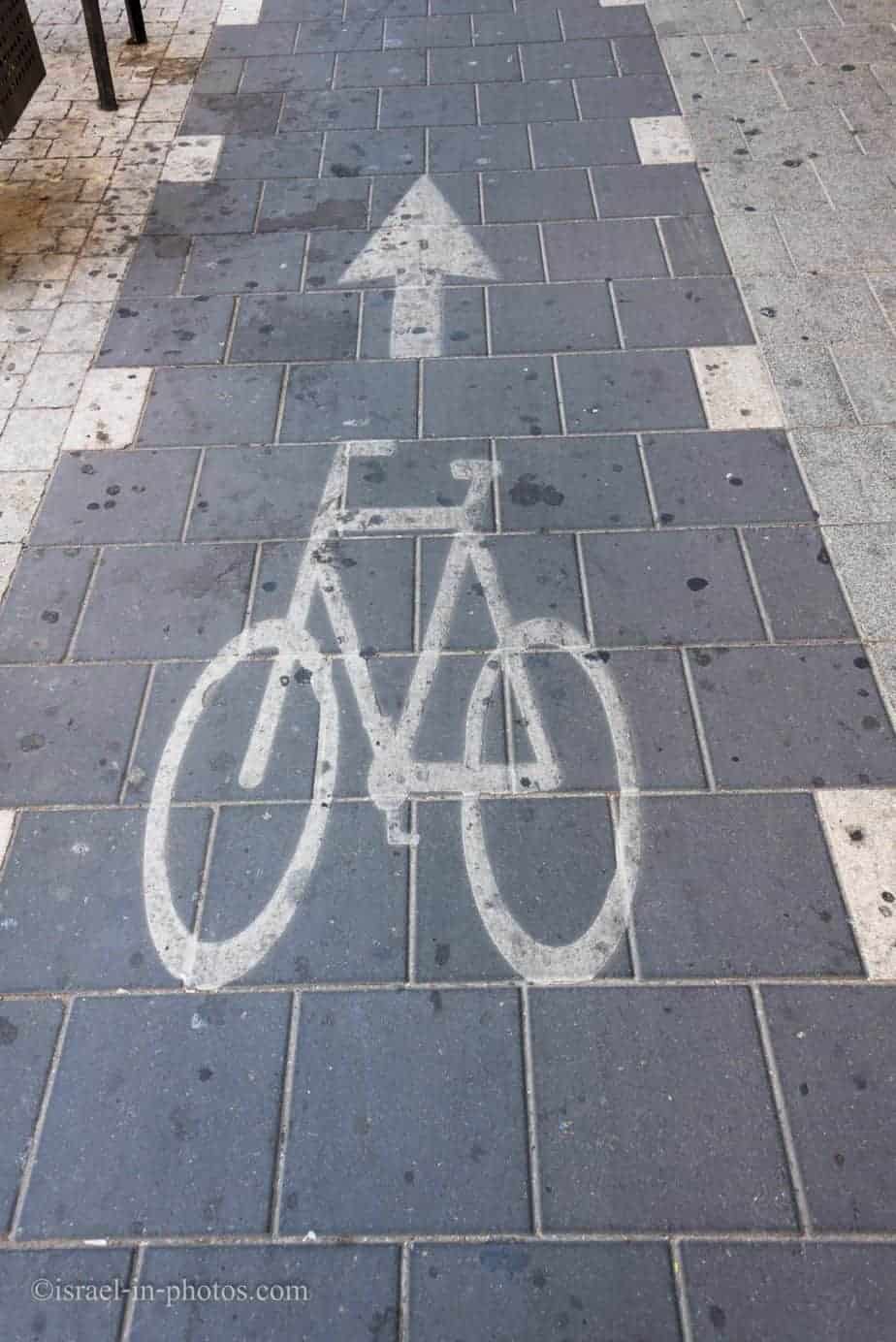
Table of Contents
Rabin Square
Rabin Square and Tel Aviv City Hall:

Up till 1995, it was called Kings of Israel Square. And in 1995 the square was renamed ‘Rabin Square’ following the assassination of Yitzhak Rabin which occurred there on November 4 of that year.
Several days ago a big memorial ceremony was held on this square. Twenty years passed since.
Actually, the murder did not occurred on the square itself. It happened next to one of the City Hall’s side exits. And on that spot Rabin Memorial was created:
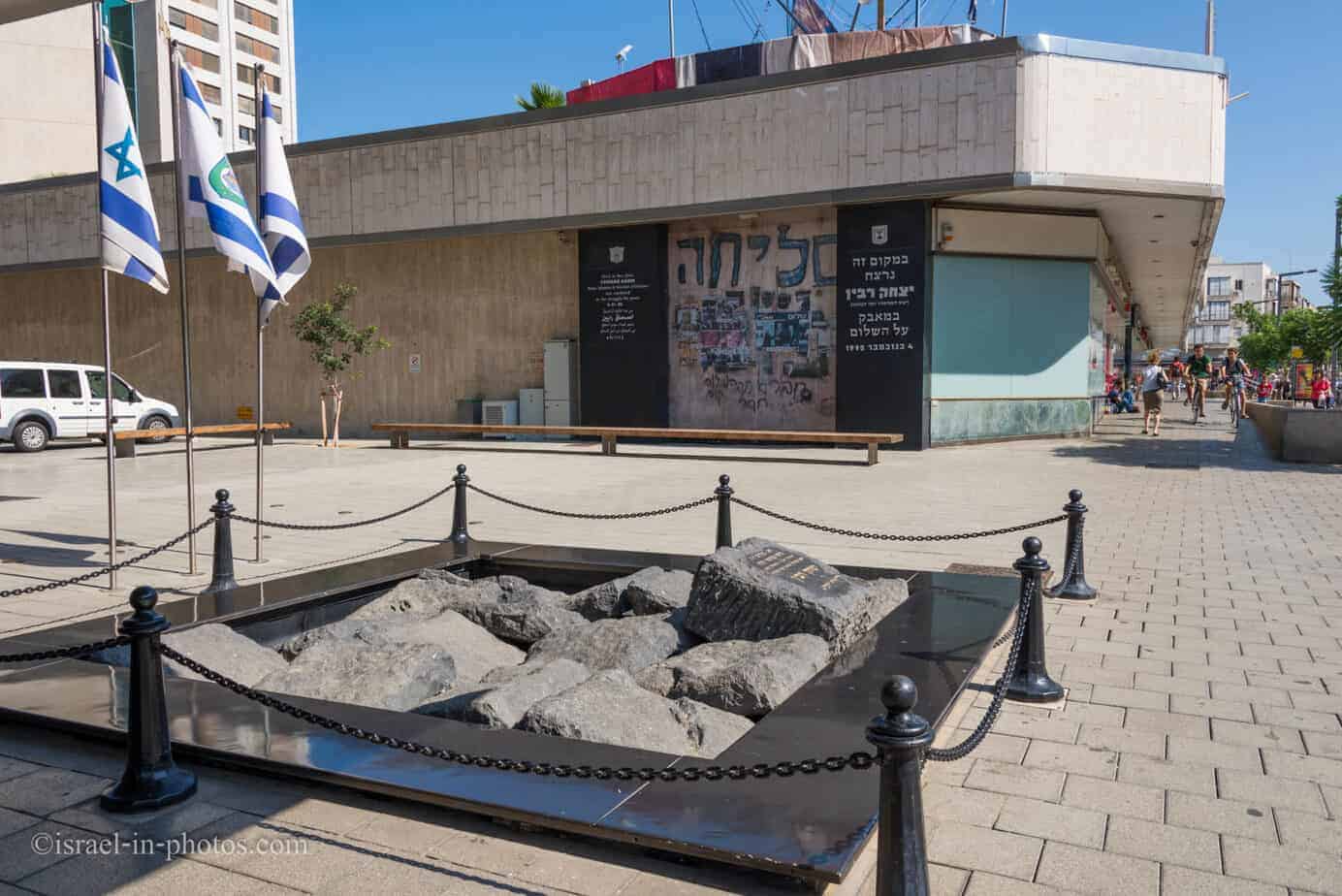
Another photo of the memorial:
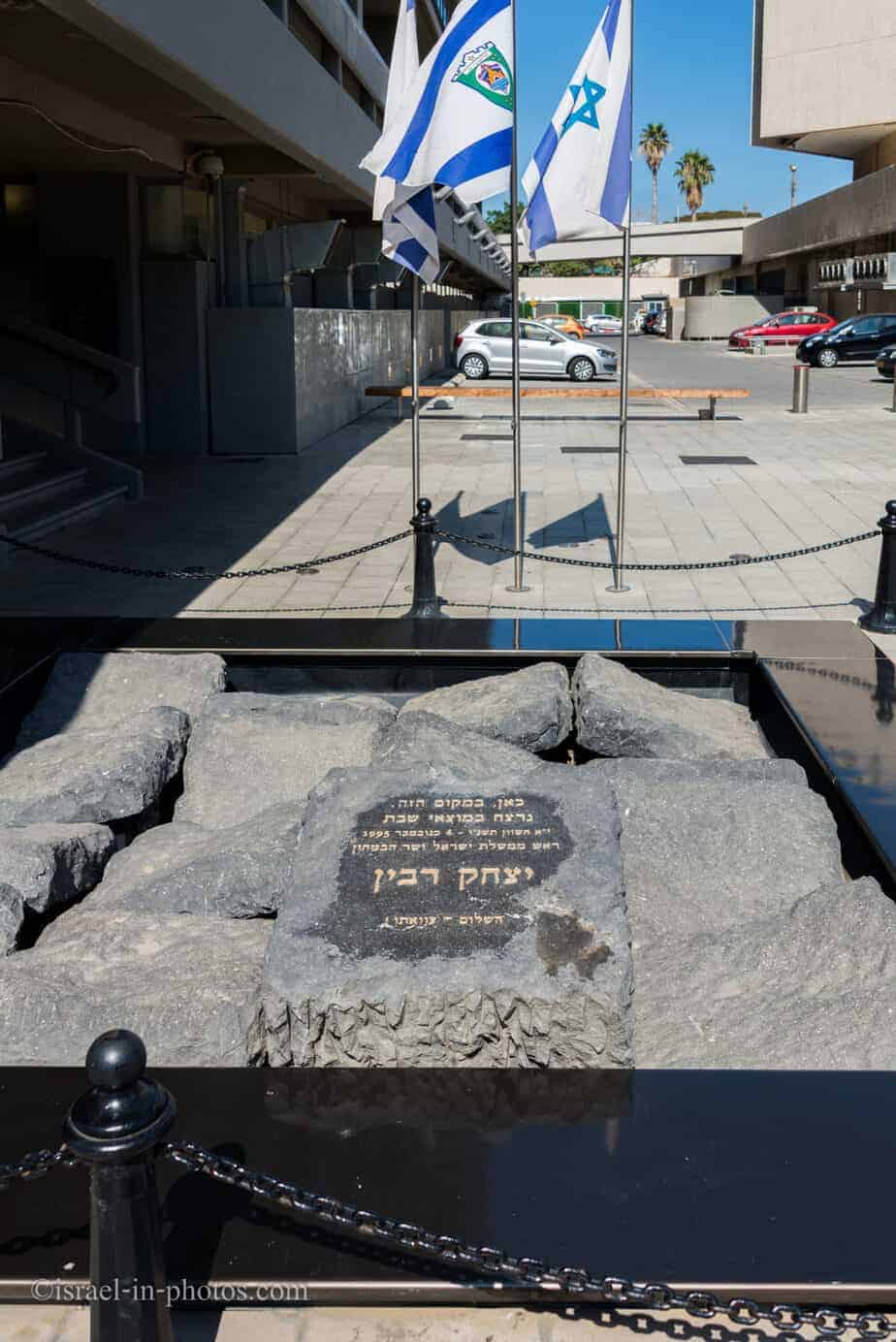
Trees are especially important in warmer climates. Walking on a shaded street is much cooler than under open sun. It’s a pity that there are not many such streets in Israel.

Piano fence:
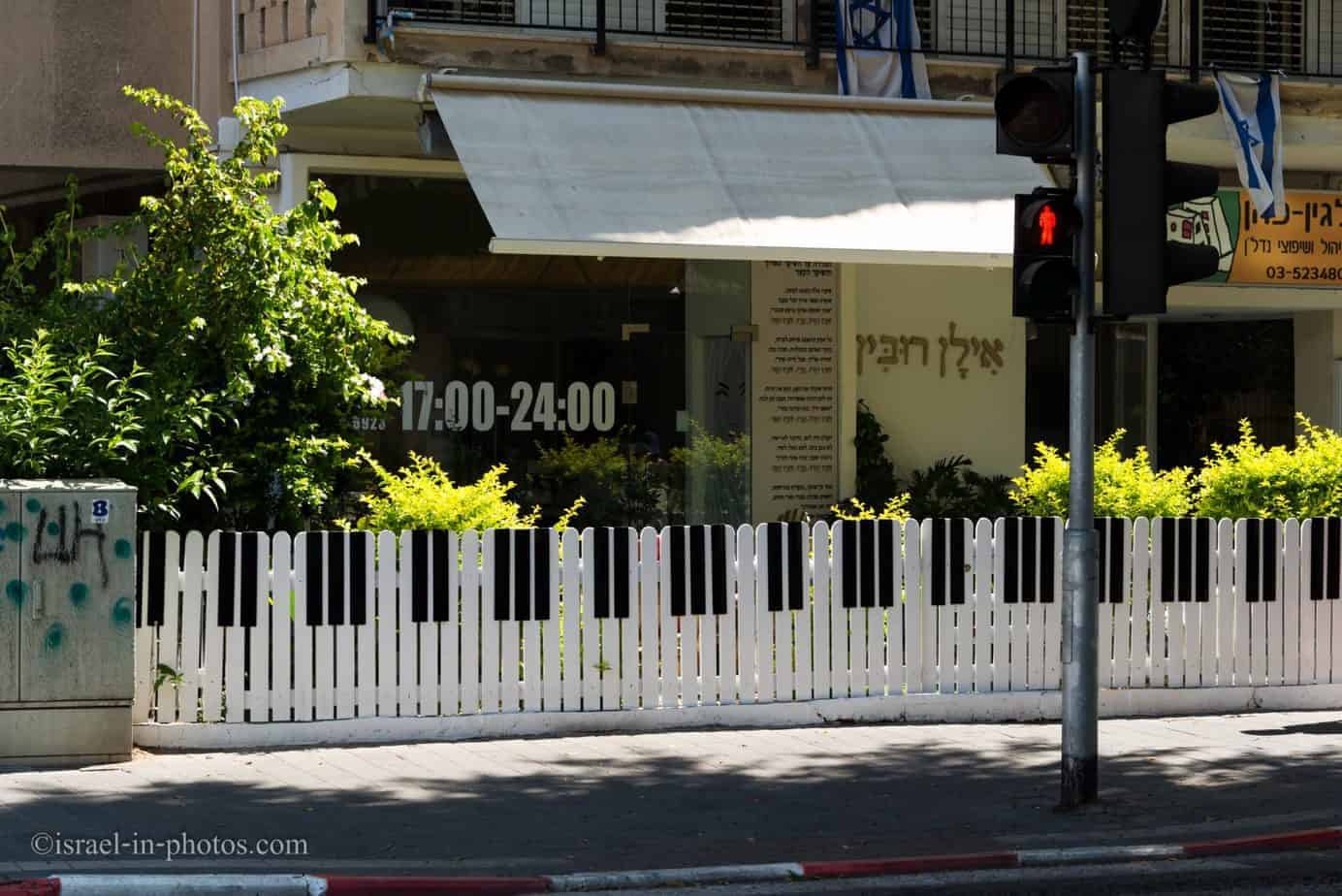
Dizengoff
We are already walking on Dizengoff street. Who was Dizengoff? Meir Dizengoff (1861 – 1936) was a Zionist politician and the first mayor of Tel Aviv.
In 1905, spurred by his Zionist beliefs, Dizengoff returned to Palestine and settled in Jaffa. He established the Geulah company, which bought up land in Palestine from Arabs, and became involved in the import business, especially machinery and automobiles to replace the horse-drawn carriages that had served as the primary transportation from Jaffa port to Jerusalem and other towns. He also co-founded a boat company that bore his name, and served as the Belgian consul. When Dizengoff learned that residents were organizing to build a new neighborhood, Tel Aviv, he formed a partnership with the Ahuzat Bayit company and bought land on the outskirts of Jaffa, which was parceled out to the early settlers by lot.
Dizengoff became head of the town planning in 1911, a position that he held until 1922. When Tel Aviv was recognized as a city, Dizengoff was elected mayor. He remained in office until his death, apart from a three-year hiatus in 1925-1928.
Closer to Dizengoff square you can see artists selling their work (on Fridays starting from 10 am):
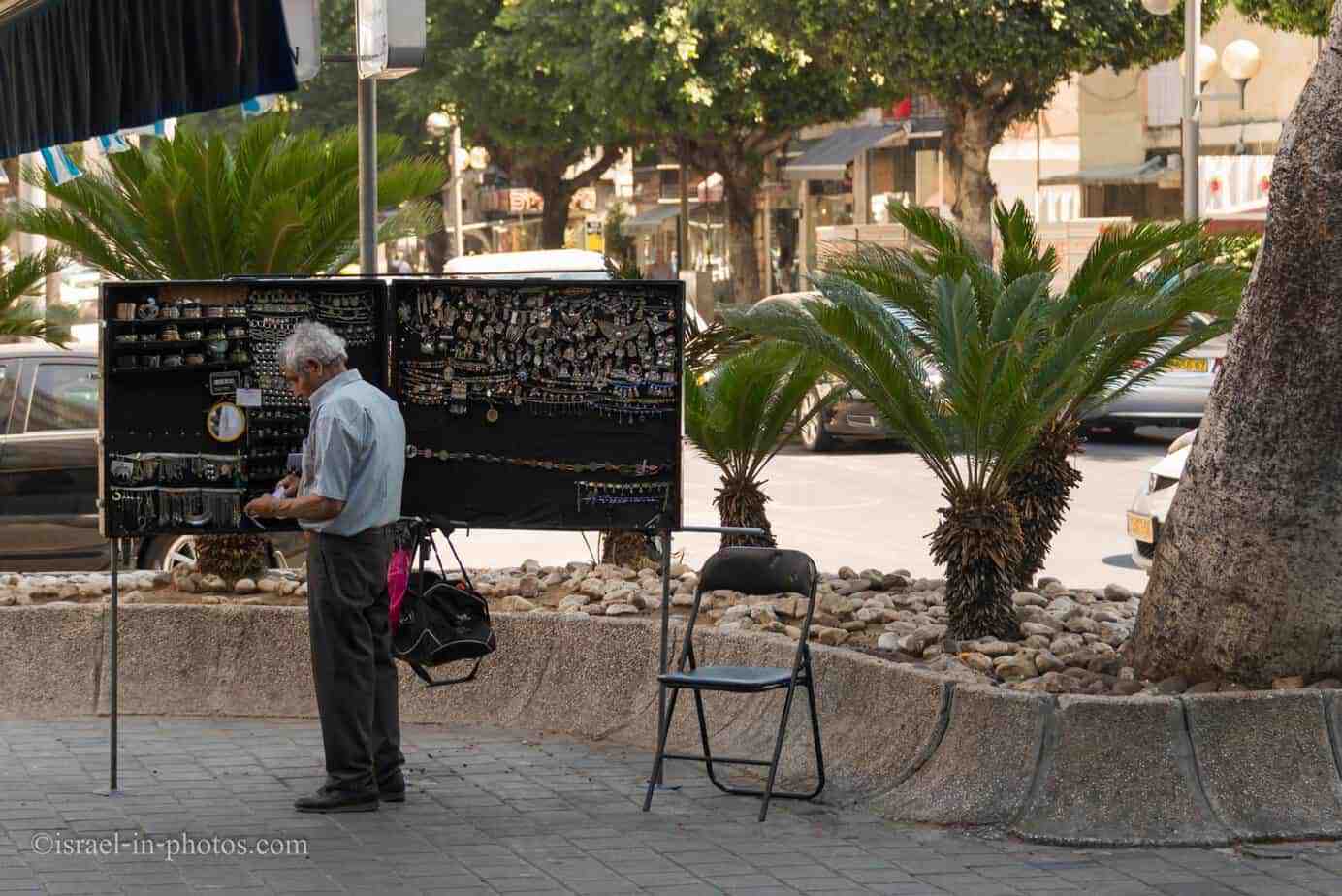
In 1930, after the death of his wife, Dizengoff donated his house to his beloved city of Tel Aviv and requested that it be turned into a museum. The house underwent extensive renovations and became the Tel Aviv Museum of Art in 1932. The museum moved to its current location in 1971. On 14 May 1948, David Ben-Gurion declared the independence of the State of Israel at the Dizengoff residence. The building is now a history museum and known as Independence Hall.
Dizengoff Square

On one side of the square you can find a second-hand market:

It was Japan week, thus the fountain was modified to show Japan flag:

And when you continue further ahead you will reach Dizengoff Center shopping mall. We will be visiting inside in one of our future Tel Aviv walks.
That’s all for today and I’ll see you in future travels!
Stay Tuned!
Check out Tel Aviv-Yafo page for additional attractions nearby.
Additional Resources
Here are several resources that I created to help travelers:
- Trip Planner with Attractions and Itineraries is the page that will help you create your perfect travel route.
- What is the Best Time to visit Israel? To answer this question, we will consider the weather, prices, holidays, festivals, and more.
- Information and Tips for Tourists to Israel will answer the most common questions tourists have about Israel (including safety, passports, weather, currency, tipping, electricity, and much more).
- Israel National Parks and Nature Reserves include a complete list, top ten, map, tickets (Israel Pass, Matmon, combo), and campsites.
- If you are looking for things to do, here are the pages for Jerusalem, Tel Aviv, Haifa, Sea Of Galilee, Akko (Acre), Eilat, Nazareth, Safed (Tzfat), and Makhtesh Ramon.



